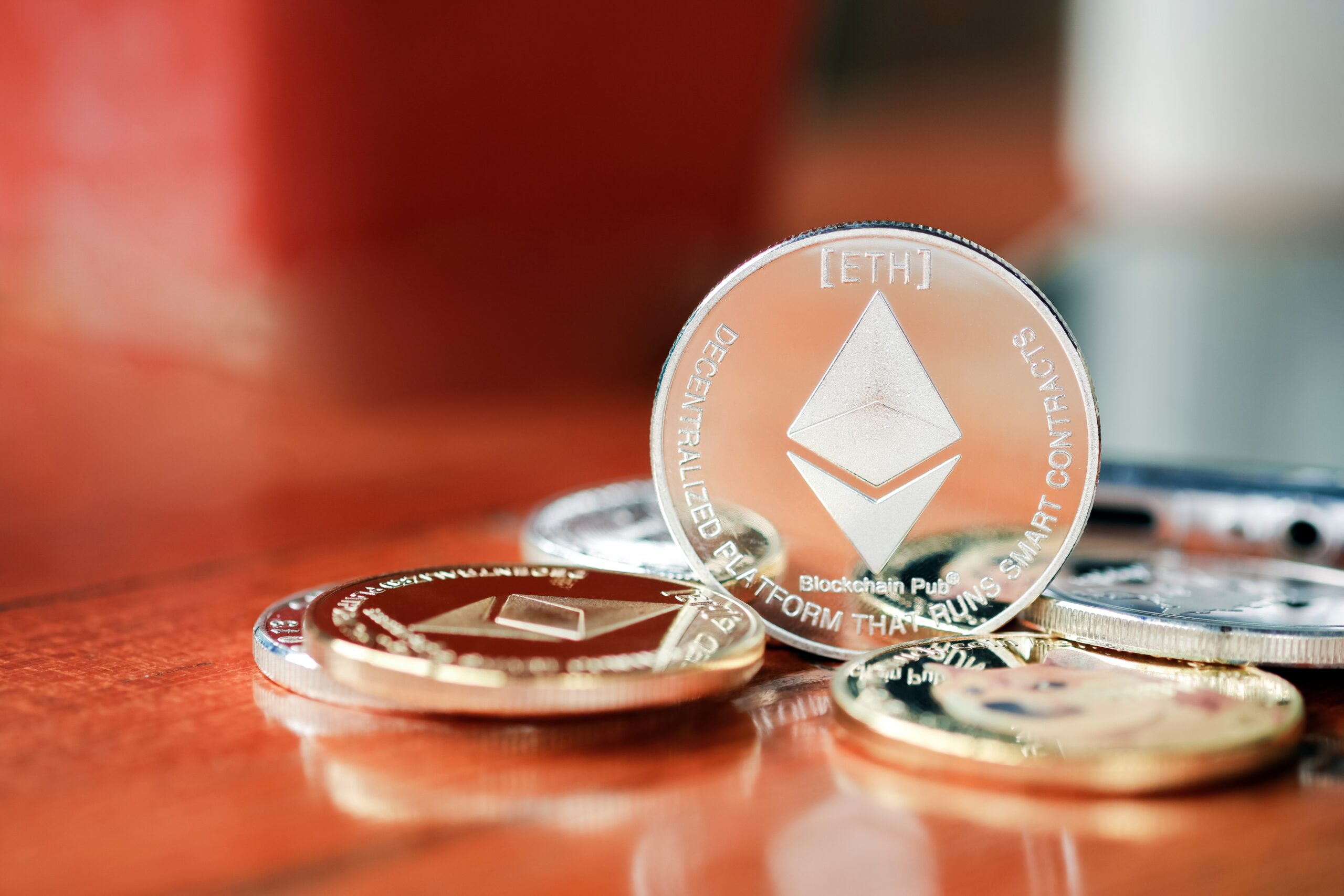Ethereum Competition And L2 Scaling | Deep Dive
Review Date: May 10th, 2022
Status of Layer-1s and Infrastructure projects
A common standard for comparing Layer-1s is how they prioritize the spectrum of Blockchain Trilemma (security, scalability, and decentralization). For the sake of this article, we will be discussing scalability. The main elements of scalability that can be increased are throughput (transactions per second) and transaction speed (finality). Scalability is necessary for widespread crypto adoption because it improves user experience and enhances the scope of which applications a blockchain can optimally support (i.e., order-based DEX).
Ethereum was designed to prioritize security and decentralization (sacrificing scalability). Due to this design, Ethereum is currently only running at approximately 12 TPS. This lack of scalability has been one of the main reasons numerous smart contract platforms have emerged and pose serious competition, namely: Solana, NEAR, Avalanche, and BNB Chain.
Ethereum Competition:
Solana is optimized for high performance and runs a novel Proof-of-History (PoH) consensus mechanism. Solana’s scaling is unique such that it is hardware-based, meaning its TPS and finality times will improve with each GPU upgrade (roughly every two years, following Huang’s Law). Solana claims to be able to process 50,000 TPS and, with Neon Labs’ work, can become EVM-compatible. This will also allow for Ethereum applications to be seamlessly deployed on Solana whilst leveraging its high TPS and hence could capture ETH’s market share.
Solana is unique compared to many other Layer-1s through its entirely monolithic architecture and hardware-based scaling solutions that allow the chain to optimize high performance and composability. Ethereum is currently transitioning to ETH 2.0 (PoS and eventually sharding). This transition to sharding and its large Layer-2 ecosystem may affect its composability and create friction between the different rollups and shards. Solana’s biggest drawbacks stem from its PoH consensus mechanism (which may have fundamental security flaws), and the risk of centralization as validators get phased out due to high hardware costs, which is one of the strengths of Ethereum.
BNB Chain runs a Delegated Proof-of-Stake (DPoS) consensus mechanism, allowing shorter block times and cheaper transaction costs. BNB Chain is EVM-compatible by default, enabling it to leverage the rich universe of Ethereum tooling and developers. BNB Chain relies on the top 21 most staked nodes to be the validator set; a proposal to allow 41 nodes to validate the chain is currently in effect. The limited number of nodes allows for superior scalability because of higher hardware requirements but also sacrifices decentralization because of high staking requirements and validator structure. BNB Chain aims to increase its scalability by implementing BSC Application Sidechains (BAS), which will help decrease the BNB chain’s computational workload. These sidechains will be directly compatible with native BNB dApps but will operate autonomously (i.e., running their own validator set). These advancements are coming in direct response to what BNB defines as MetaFi. So far, the BAS testnet is home to Celer Network ($CELR), Ankr ($ANKR), and NodeReal. Even with the validator set expansion and sidechain architecture, the biggest risk with BNB Chain is its centralized nature.
NEAR Protocol is a Layer-1 blockchain that runs a sharded PoS consensus mechanism. NEAR’s Nightshade design introduces the idea of dynamic re-sharding (adding or removing shards based on network demand). This design incentivizes and optimizes scalability. Unlike Solana, NEAR has already integrated EVM compatibility through Aurora, allowing developers to run Ethereum dApps on NEAR. NEAR is a legitimate Ethereum competitor because of its high throughput, superior user experience, and implementation of a native algorithmic stablecoin $USN (similar to Terra’s $UST). The main risks for NEAR are low market adoption and composability due to sharding.
Avalanche features EVM compatibility but differs because the EVM is directly integrated into Avalanche’s C-Chain. Avalanche leverages subnets for scalability. A subnet is an individual blockchain or set of blockchains built on top of the Avalanche Primary Network (APN). Each subnet can set its parameters (virtual machine, fee structure, validator set, etc.). This allows subnets to benefit from the security of the Avalanche consensus while reducing the workload for the universal validators. So far, the primary use of subnets has been around blockchain gaming (specifically Crabada and DeFi Kingdoms) due to its high on-chain activity. Still, there is a limitless number of use cases surrounding subnets. The main drawback to Avalanche subnets is the possibility of increased centralization and reduced composability (subnets can still interoperate).
Layer-2 Solutions:
As mentioned earlier, Ethereum is currently operating at roughly 12 TPS. Ethereum’s scalability can be increased via rollups. A rollup is a Layer-2 scaling solution that is optimized for increasing TPS and transaction finality. Rollups function by moving transaction computation (and most of the data) off-chain while still retaining the security consensus of the underlying chain. Rollups provide the potential to increase Ethereum from roughly 15 TPS to over 100,000 TPS. The two main types of rollups are: optimistic and zero-knowledge (zk) rollups.
Optimistic rollups follow a “trust but verify” system where the smart contract will “trust” that the data in the rollup batch is valid. Still, any node in the network is able to submit a challenge (fraud proof) if it suspects the batch is invalid. If the fraud proof is correct, the invalid batch is reverted, whoever submitted the batch loses their deposit, and the challenger receives a reward for their work in securing the chain. The main drawback of Optimistic Rollups is long dispute periods (typically 7 days). This method is excellent for security but hinders user experience, likely making it unsustainable in the long term. The most well-known OR projects are Arbitrum, Optimism (token coming soon), Metis ($METIS), and Boba Network ($BOBA).
Zero-knowledge (zk) rollups follow a similar structure to ORs. The main difference is that zk-rollups rely on validity proofs (zk-SNARK or zk-STARK) to verify the validity of the rollup batch instantly. This eliminates the need for a dispute period. The main benefits of zk-Rollups include faster transaction finality and not being vulnerable to the same economic attacks as ORs. The most significant drawbacks for zk-Rollups are that validity proofs require intense computation (making it unsuitable for applications with limited on-chain activity), and due to the complex technology necessary, it is more challenging to create an EVM-compatible zk-rollup. Starkware, zk-Sync, and Polygon Hermez ($HEZ) are a few projects making significant progress. This is one trend where the opportunity lies on the L2 front.
The main drawbacks of rollups are fragmenting liquidity into multiple systems (Layer-1 and each Layer-2 have their own liquidity), decreasing composability, and the data availability problem. Both zk-rollups and optimistic rollups require data availability (DA) to function correctly. Celestia is an upcoming project that claims to have the solution to the data availability problem. Celestia aims to create a modular blockchain network that is optimized for ordering transactions and verifying that published transaction data is available. This framework allows application-specific blockchains to deploy on top of Celestia and leverage its data availability, native security, and composability. This is one project I believe has the potential to do well for investors.
Closing Thoughts:
Many competing Layer-1s (and Layer-2s) are focused on capturing ETH’s market share. The most significant competition comes from Solana, BNB, NEAR, Avalanche, and Celestia. Each of these platforms presents its own unique solution to scalability: Solana (hardware-based), NEAR (sharding), Avalanche (subnets), BNB Chain (sidechains), and Celestia (modularization). In addition to these Layer-1s, keep an eye on zk-rollups, which may be a crucial long-term narrative. Although it is difficult to say what the future holds, there is increasing evidence that it will be multichain, with competing L1 and L2s carving out their niches by implementing unique architecture and scalability solutions. Hence, we are also seeing i̇nfrastructure plays like LayerZero and Axelar that are focused on allowing these siloed L1s to communicate and interoperate with each other (another trend investors should be excited about).





